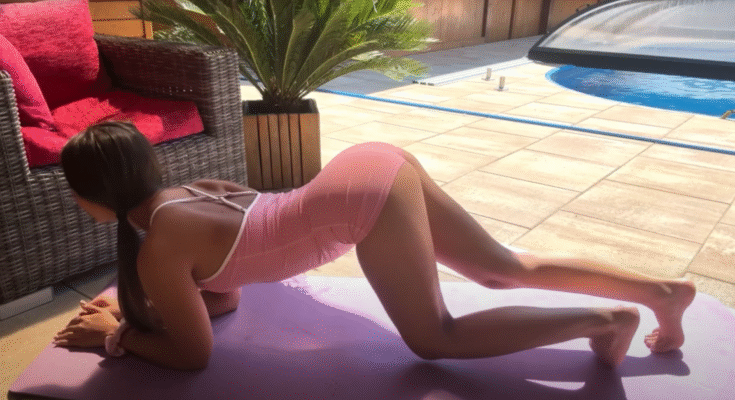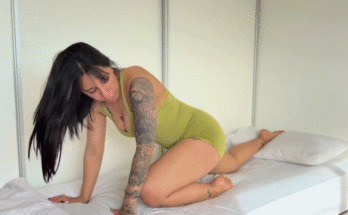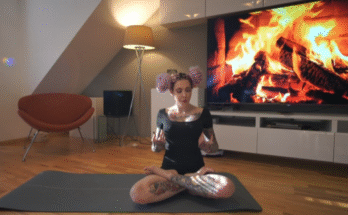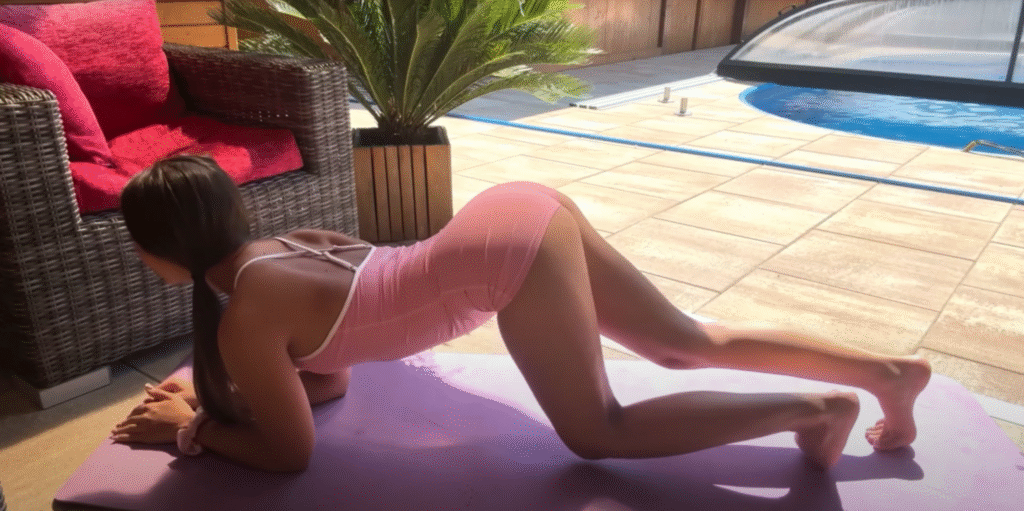
Flexibility and balance are two key components of physical fitness that often get overlooked. While strength and cardio exercises receive much attention, the ability to move freely and maintain control over your body is just as important. A full body stretch routine designed to improve both flexibility and balance can transform not only your workouts but also your daily life. Whether you’re an athlete, a yoga lover, or simply someone looking to release tension after long hours of sitting, stretching daily is one of the best gifts you can give your body.
This article will guide you through a simple yet powerful routine that targets every major muscle group, helps restore mobility, and builds balance to prevent injuries. By the end, you’ll have a clear sequence you can practice at home or in the gym to move with greater ease and confidence.
Why Flexibility and Balance Matter
1. Flexibility
Flexibility is the ability of your muscles and joints to move through their full range of motion. When flexibility is limited, your body compensates with awkward movement patterns that increase strain and risk of injury. Improved flexibility leads to:
- Easier, pain-free movement.
- Better athletic performance.
- Reduced muscle stiffness and soreness.
- Enhanced posture.
2. Balance
Balance is your ability to maintain stability whether you’re still or moving. It requires strong muscles, coordination, and body awareness. Good balance helps with:
- Preventing falls and injuries.
- Better control during sports or dance.
- Improved confidence in daily activities.
- Core strength and coordination.
Together, flexibility and balance create harmony in the body. Stretching increases range of motion, while balance challenges your stabilizing muscles and nervous system. Combined, they unlock smoother, more controlled movement.
Preparing for the Routine
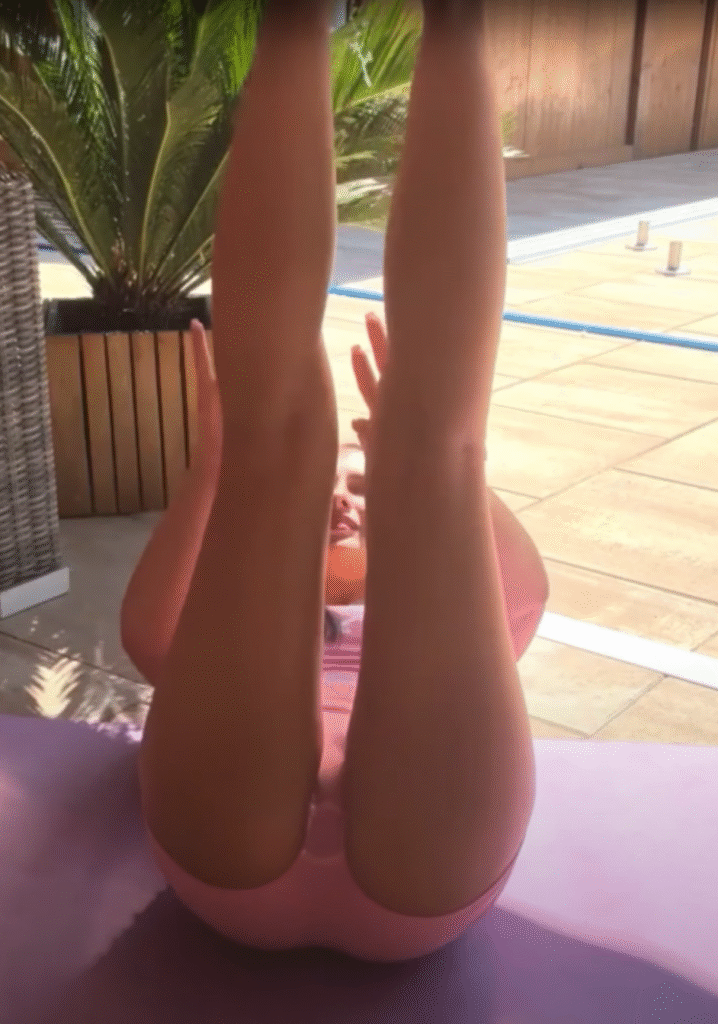
Before diving in, keep these tips in mind:
- Warm up gently for 3–5 minutes with light movements like walking, jogging in place, or arm circles.
- Breathe deeply through each stretch — avoid holding your breath.
- Move slowly and mindfully into each posture; never force your body.
- Use support if needed (like a chair or wall for balance poses).
Full Body Stretch Routine
This 20–25 minute routine covers your entire body from head to toe, blending static and dynamic stretches with balance-focused postures.
1. Neck & Shoulder Release (2 minutes)
- Sit or stand tall.
- Slowly tilt your right ear toward your shoulder, holding for 20 seconds.
- Switch to the left side.
- Roll shoulders backward in slow circles, then forward.
Benefit: Relieves tension from desk work, improves posture.
2. Standing Forward Fold (1 minute)
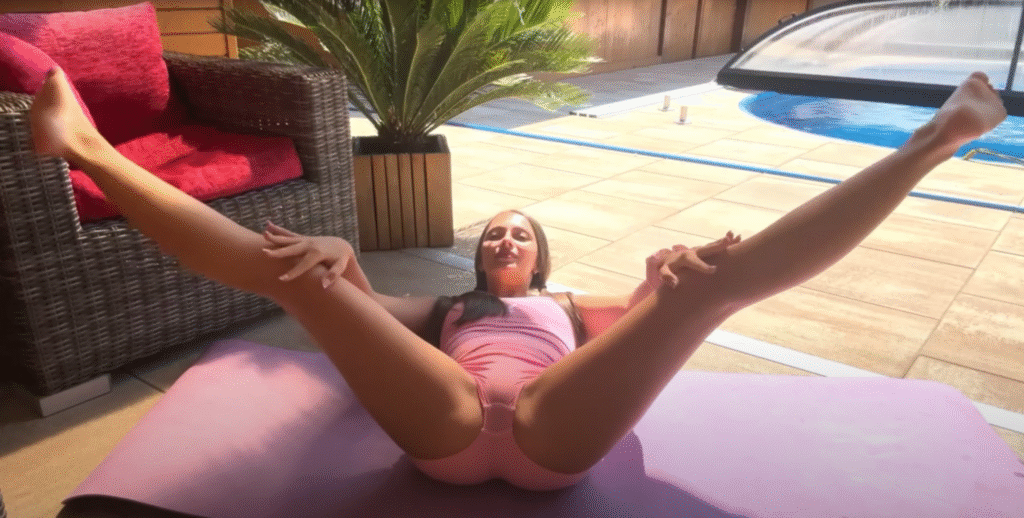
- Stand with feet hip-width apart.
- Exhale, hinge at hips, and let your upper body hang forward.
- Relax your neck and arms, bend knees if needed.
Benefit: Stretches hamstrings, calves, and spine while calming the nervous system.
3. Cat-Cow Flow (2 minutes)
- On hands and knees, align wrists under shoulders, knees under hips.
- Inhale, drop belly and lift chest (Cow Pose).
- Exhale, round spine, chin to chest (Cat Pose).
- Flow for 6–8 breaths.
Benefit: Improves spinal mobility and warms up the back.
4. Low Lunge with Side Stretch (2 minutes each side)
- Step right foot forward into a lunge, left knee on the floor.
- Place hands on thigh or raise arms overhead.
- Lean slightly to the right side to stretch hip flexors and obliques.
- Switch sides.
Benefit: Opens hips, stretches thighs, and lengthens side body.
5. Seated Butterfly Stretch (2 minutes)
- Sit with soles of feet together, knees out wide.
- Hold feet with hands, sit tall, and gently fold forward.
Benefit: Improves inner thigh flexibility and hip mobility.
6. Standing Quad Stretch with Balance (1 minute each side)
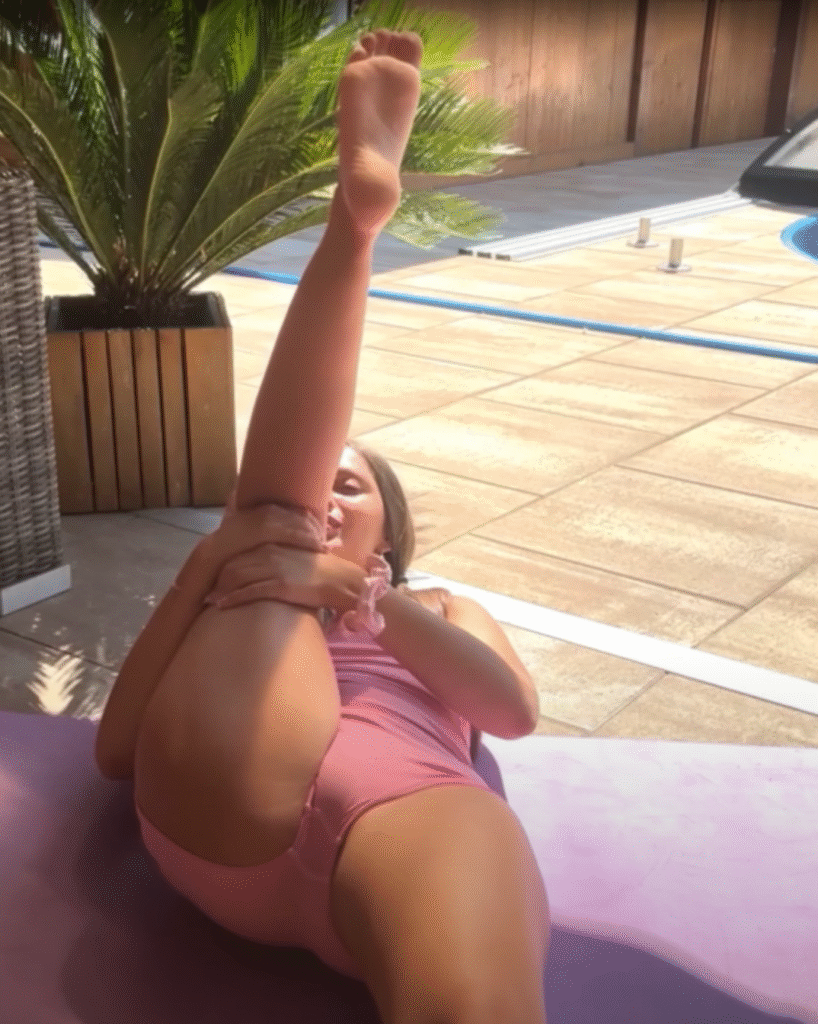
- Stand tall, hold wall if needed.
- Bend right knee, bringing heel toward glutes, and hold ankle.
- Keep knees close together, engage core for balance.
- Switch sides.
Benefit: Stretches quadriceps while training balance on one leg.
7. Warrior III Balance Stretch (1 minute each side)
- Stand on right leg, hinge at hips, and extend left leg back.
- Reach arms forward for balance, forming a straight line from fingertips to toes.
- Hold for 20–30 seconds, then switch sides.
Benefit: Strengthens core, hamstrings, and glutes while improving balance.
8. Seated Spinal Twist (1 minute each side)
- Sit tall with legs extended.
- Cross right foot over left thigh, place right hand behind you.
- Inhale, lengthen spine; exhale, twist gently to the right.
- Repeat on the left.
Benefit: Increases spinal flexibility and releases tension in the back.
9. Downward Facing Dog (2 minutes)
- From hands and knees, lift hips toward the ceiling.
- Press heels toward the floor and spread fingers wide.
- Keep spine long and breathe deeply.
Benefit: Stretches shoulders, hamstrings, calves, and strengthens arms.
10. Tree Pose (1 minute each side)
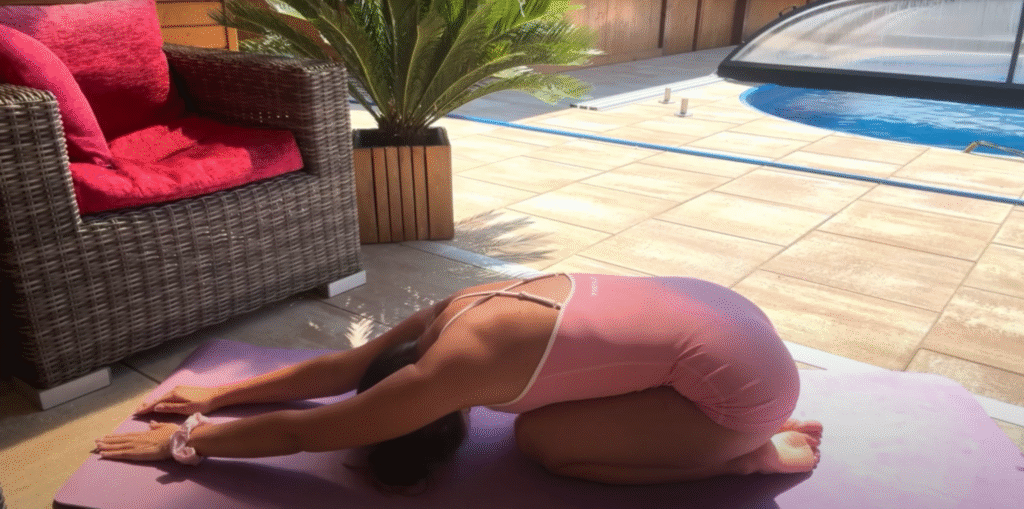
- Stand tall, shift weight onto right foot.
- Place left sole on inner calf or thigh (not knee).
- Hands at heart or overhead.
- Switch sides.
Benefit: Improves single-leg balance, focus, and hip stability.
11. Pigeon Pose (2 minutes each side)
- From plank, bring right knee forward, shin across mat.
- Extend left leg back, fold forward if comfortable.
- Switch sides.
Benefit: Deep hip opener for glutes and lower back.
12. Seated Hamstring Stretch (2 minutes each side)
- Sit with right leg extended, left foot inside thigh.
- Fold forward over extended leg.
- Switch sides.
Benefit: Lengthens hamstrings and improves lower back mobility.
13. Bridge Pose with Hold (1 minute)
- Lie on back, bend knees, feet flat.
- Lift hips toward ceiling, clasp hands under back.
- Hold for 20–30 seconds.
Benefit: Stretches chest, strengthens glutes, and improves spinal alignment.
14. Supine Figure-Four Stretch (1 minute each side)
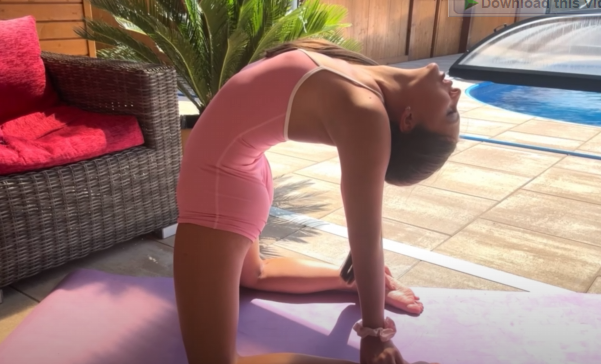
- Lie on back, bend knees.
- Cross right ankle over left thigh.
- Pull left leg toward chest.
- Switch sides.
Benefit: Targets hips and glutes, reduces lower back tension.
15. Final Relaxation (2 minutes)
- Lie flat on your back, arms at sides, palms up.
- Close eyes, breathe naturally, and let body relax.
Benefit: Allows muscles to absorb benefits of stretching, calms mind.
Routine Summary
This sequence blends dynamic warm-up movements, static stretches, and balance postures. It flows naturally, ensuring that each major muscle group is targeted:
- Neck & shoulders for tension release.
- Spine and back for mobility.
- Hips and hamstrings for flexibility.
- Core and legs for strength and balance.
Practicing this routine 3–5 times per week can lead to noticeable improvements in flexibility, stability, and overall body awareness.
Tips to Enhance Your Practice
- Stay consistent: Flexibility builds gradually with regular practice.
- Engage your core: It helps with balance and protects your spine.
- Pair with breathing: Slow breathing deepens stretches safely.
- Modify as needed: Use props like blocks, straps, or walls for support.
- Listen to your body: Stretching should feel relieving, not painful.
Final Thoughts
A full body stretch routine is more than just a fitness add-on — it’s a lifestyle practice that keeps your body mobile, balanced, and resilient. By incorporating these stretches and balance exercises into your weekly schedule, you’ll notice improved posture, greater ease of movement, and reduced stress on your muscles and joints.
Whether you’re preparing for a workout, recovering after exercise, or simply resetting after a long day of sitting, this sequence is versatile and effective. In the long run, you’ll not only move better but also feel more connected to your body and mind.
So roll out your mat, breathe deeply, and give yourself the gift of flexibility and balance — one stretch at a time.
